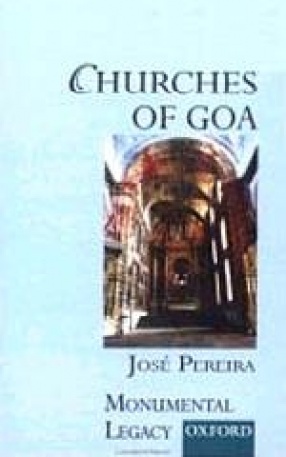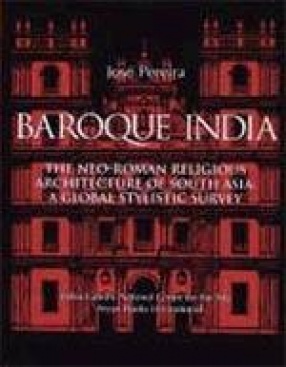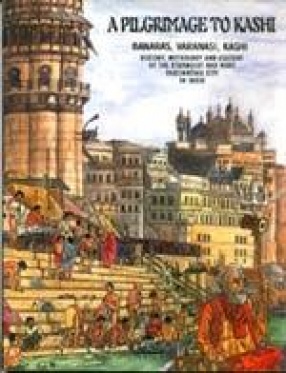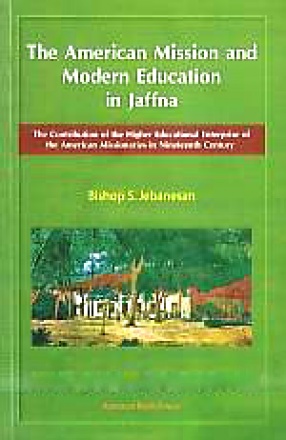Goa’s churches are the finest Neo-Roman monuments found in Asia. This book describes some of the finest examples of Goan architecture that follow either European models in idiom and style, or subject European forms to an Indian aesthetic. The author explains the five variant styles of Neo-Roman church – Renaissance, Mannerism, Baroque, Rococo, and Neoclassicism – with rich illustrations and line drawings. He also lists the Goan church plans in vogue, especially the Hindu temple-like Diminuted Sanctuary plan and the three types of altar. Narrating the four-phased evolution of the Goan church, the author goes on to describe the Se & the Providencia, churches that are European in idiom and aesthetics and also, the Bom Jesus and Graca, which combine European idiom with features of Indian aesthetics. The five churches of the Indian Baroque Quintet, also depicted here, provide the finest examples of Indian aesthetics. Richly illustrated with photographs of church interiors, maps, and line drawings, the book will be of great value to students of architectural history and the informed tourist.
Monumental Legacy: Churches of Goa
by Jose Pereira
$18.00
$20.00
In stock
Free & Quick Delivery Worldwide
All orders amounting to US$ 50 or more qualify for Free Delivery Worldwide. For orders less than US$ 50, we offer Standard Delivery at $14 per book.
ABOUT THE AUTHOR Jose Pereira
JOSE PEREIRA, Born in Bombay in 1931, B.A. (Hons.) in Sanskrit, University of Bombay (1951). Ph.D. in Ancient Indian History and Culture, University of Bombay(1958). Adjunct Professor of East-West Cultural Relationships at the Insituto Superior de Estudos Ultramarinos, Lisbon (1959-1960). Research Fellow in the History of Indian Art, School of Oriental and African Studies, University of London (1962-1966). Research Associate in the History of Indian Art, The American Academy of Benares, Varanasi(1967-1969). Professor of Theology, Fordham University, New York (1970 to present). Pereira has published 14 books and over 130 articles on theology, history of art and architecture, and on Goan and Konkani culture, language and music. MICAEL MARTINS (29 October 1914-9 February 1999) born at Ol-lli/Orlim, Goa, in 1914. Studied music in Goa, and in Bombay with renowned music teachers. Performed for various musical societies in Bombay and Delhi and directed musical groups like the Coro Sacro and the Micael Martins String Quartet. Conducted the opera Geisha (1953). Was orchestra leader of films (Films Division Orchestra, 1949, Rajkamal Kala Mandir Orchestra, 1949). Participated in concerts in Delhi, where, in 1962, he performed alongside Lata Mangeshkar and Mohammed Rafi, and, in 1972, at the inaugural function of the Delhi Symphony Orchestra. Martins began his research into traditional Goan Song in 1933. Collaborated with Jose Pereira in recording Goan songs from 1954, collecting as many as 11,000 numbers. Martins and Pereira published some of those songs in Marg (1954) and Goan Tribune (1956-1957). They also published monographs of Goan Song in A Sheaf of Deknnis (Bombay: Konkan Cultural Association, 1967) and “Song of Goa. An Anthology of Mandosâ€, in the Boletim do Instituto Menezes Braganca, no 28 (1981). Martins was a prolific composer of classical musical forms, incorporating themes of Goan folk and art song into his compositions. He composed masses, hymns, profane songs and instrumental pieces – particularly excelling in the latter, outstanding examples of which are the following:
Rapsodia (1952), Carnaval em Goa (1953). Quatro Aguarelas (1953), Crepusculo de Estrelas Moribundas (1960), and Festival (1971). Micael Martins is renowned as the greatest classical composer in the history of Goan music.
reviews
0 in total
Review by Anonymous
Be the first to review “Monumental Legacy: Churches of Goa” Cancel reply
You must be logged in to post a review.
Bibliographic information
Title
Monumental Legacy: Churches of Goa
Author
Edition
1st ed.
Publisher
ISBN
0195655591
Length
xvii+103p., Figures; Plates; Maps; Glossary; BIbliography; 23cm.
Subjects








There are no reviews yet.